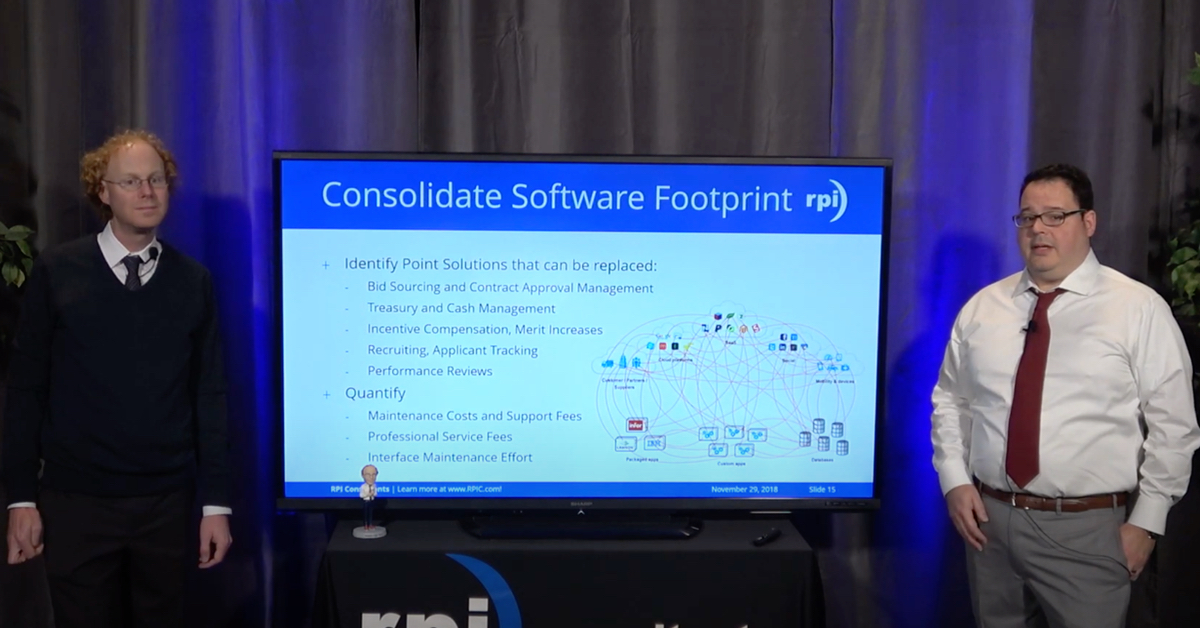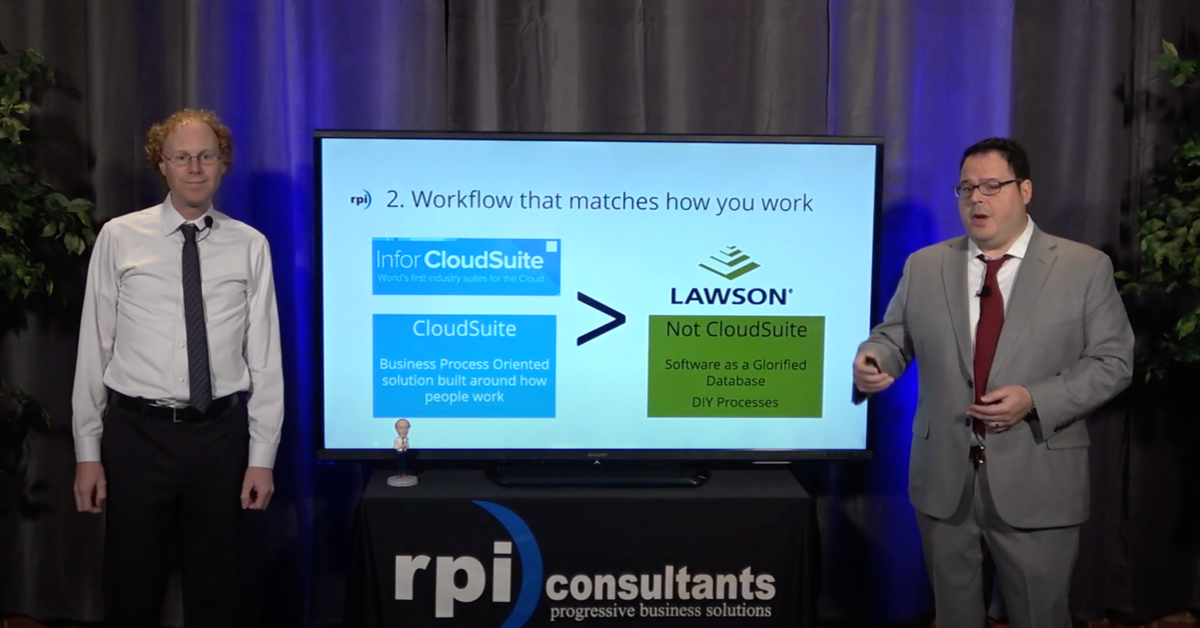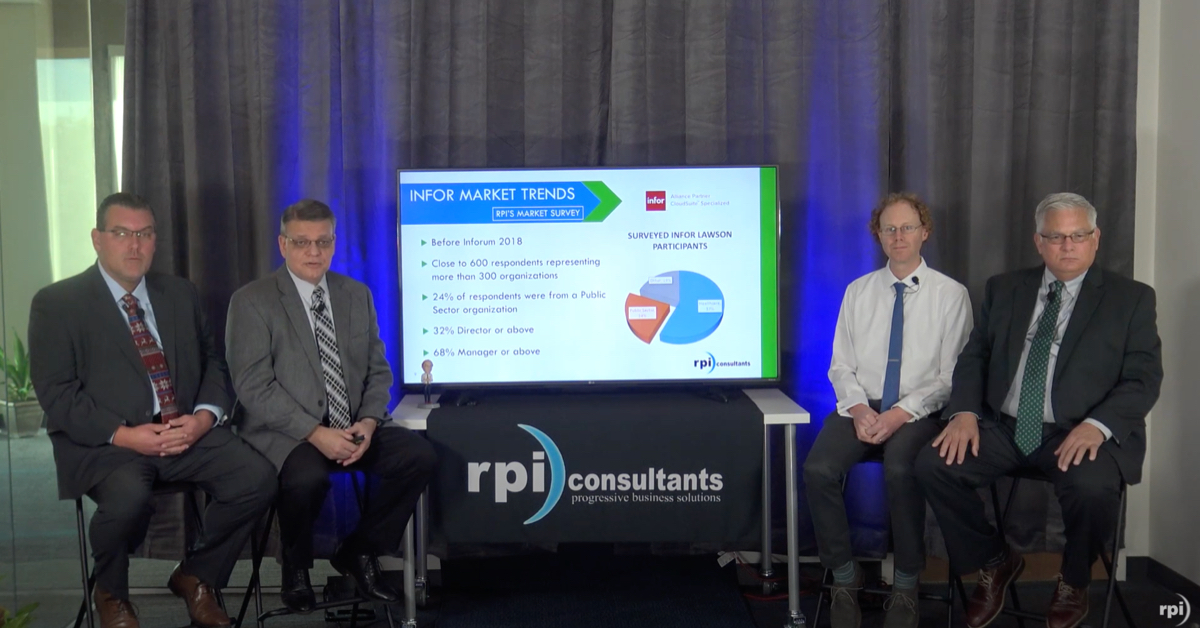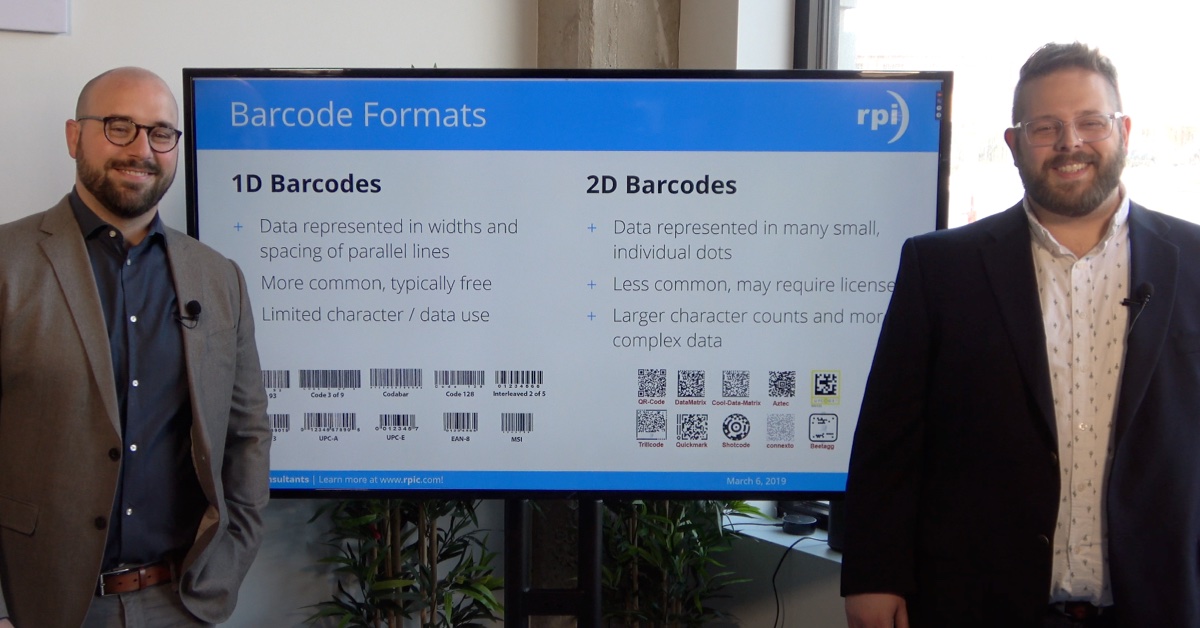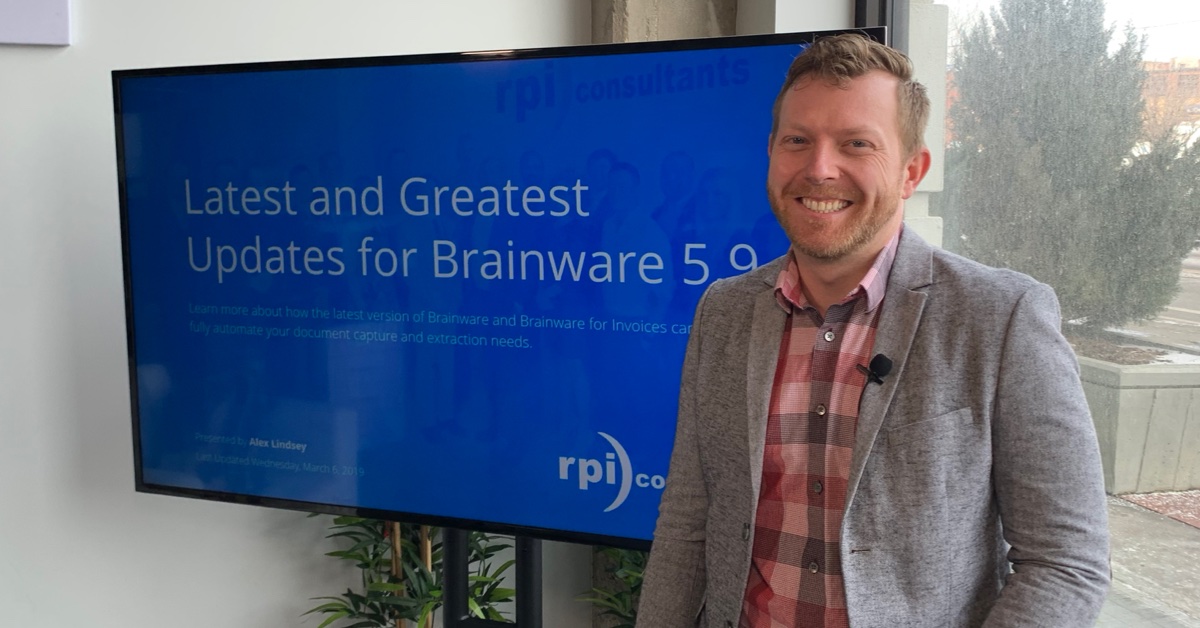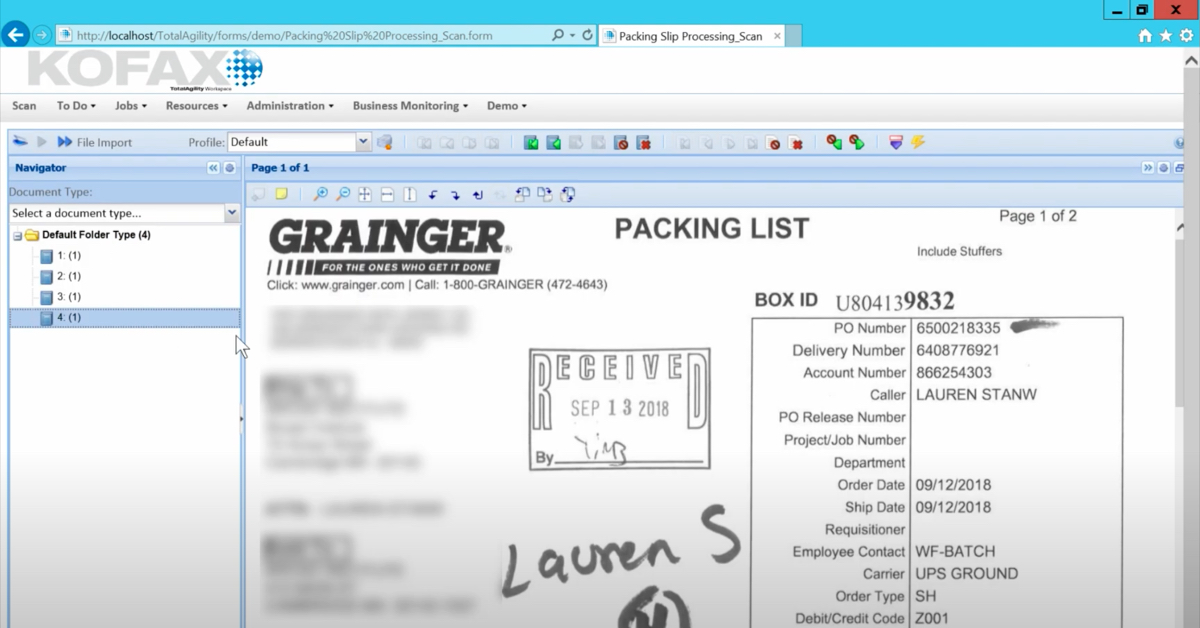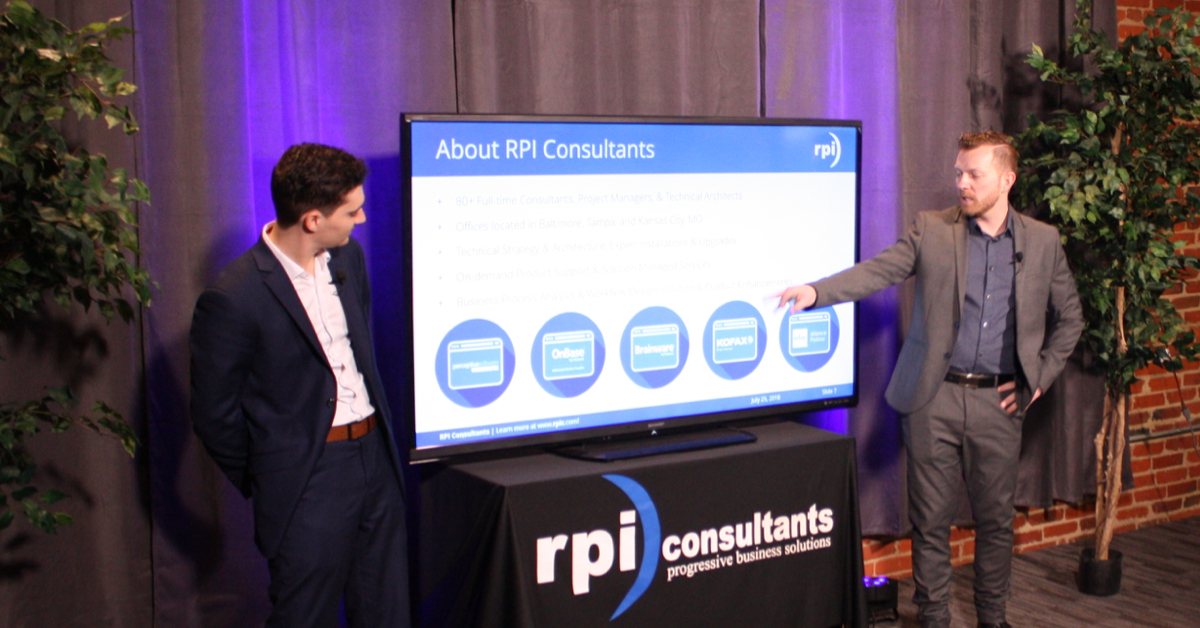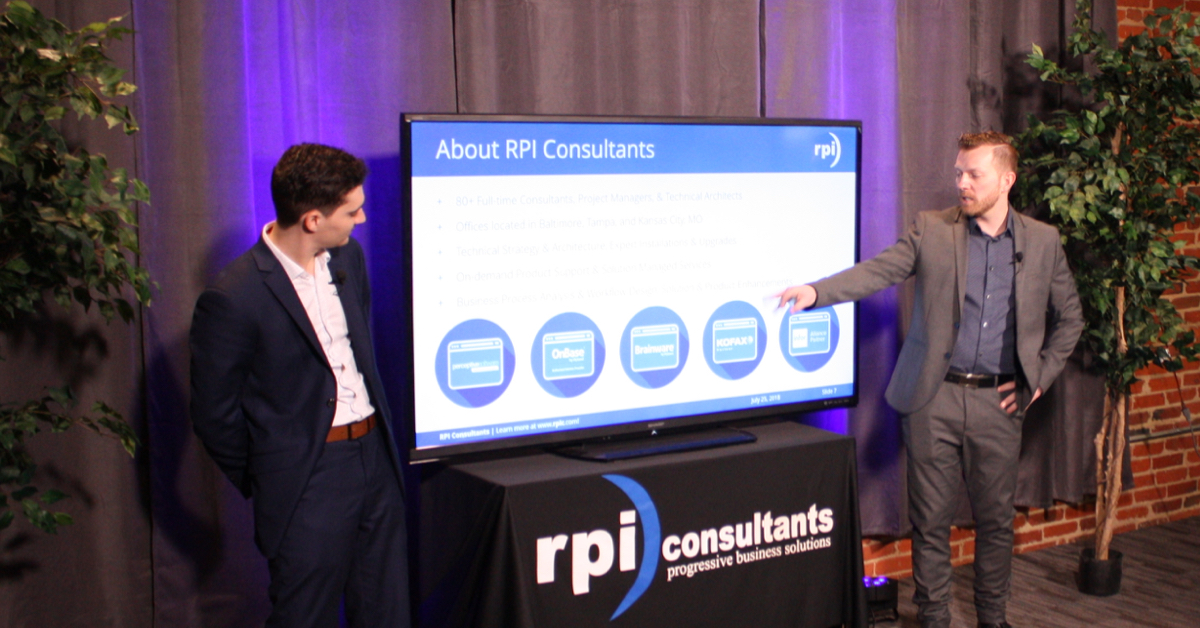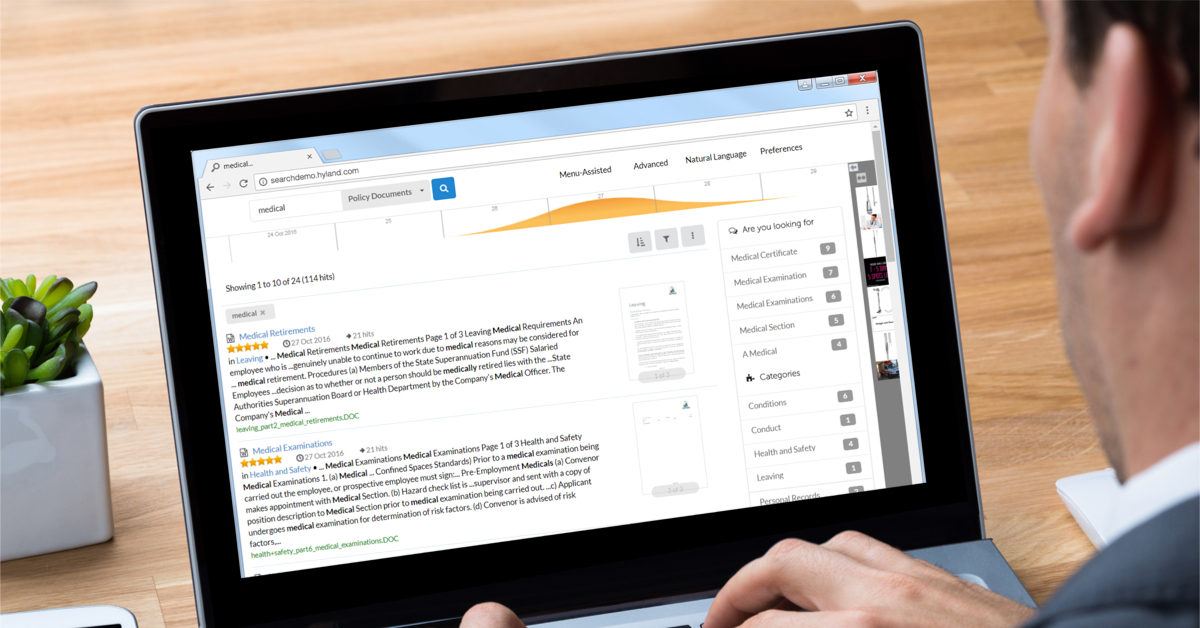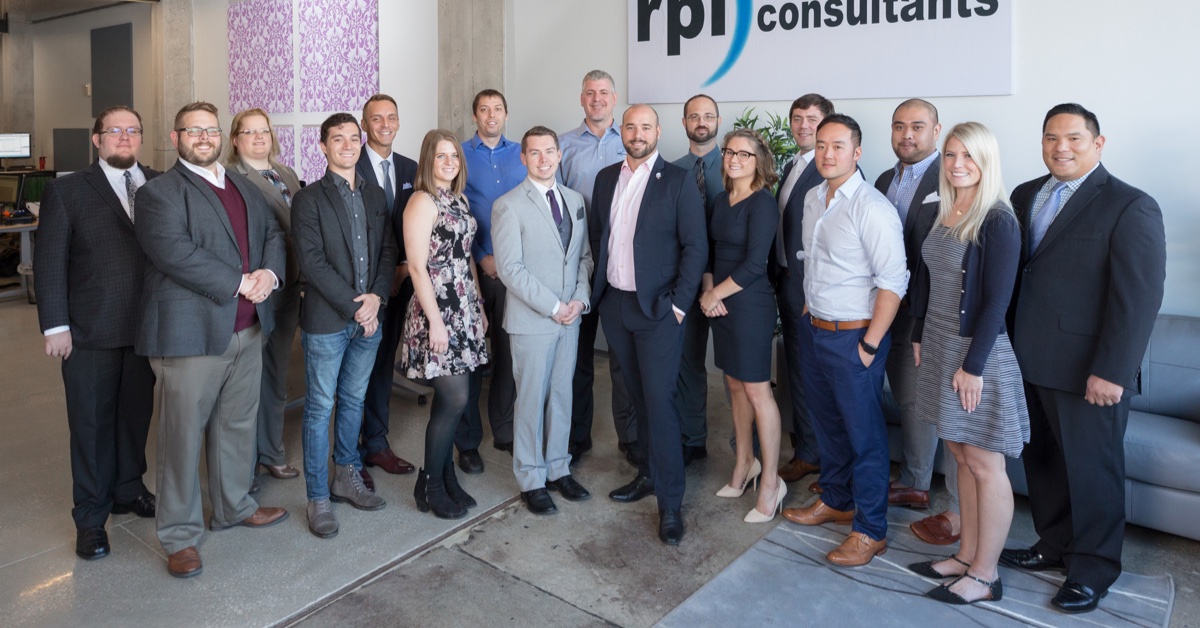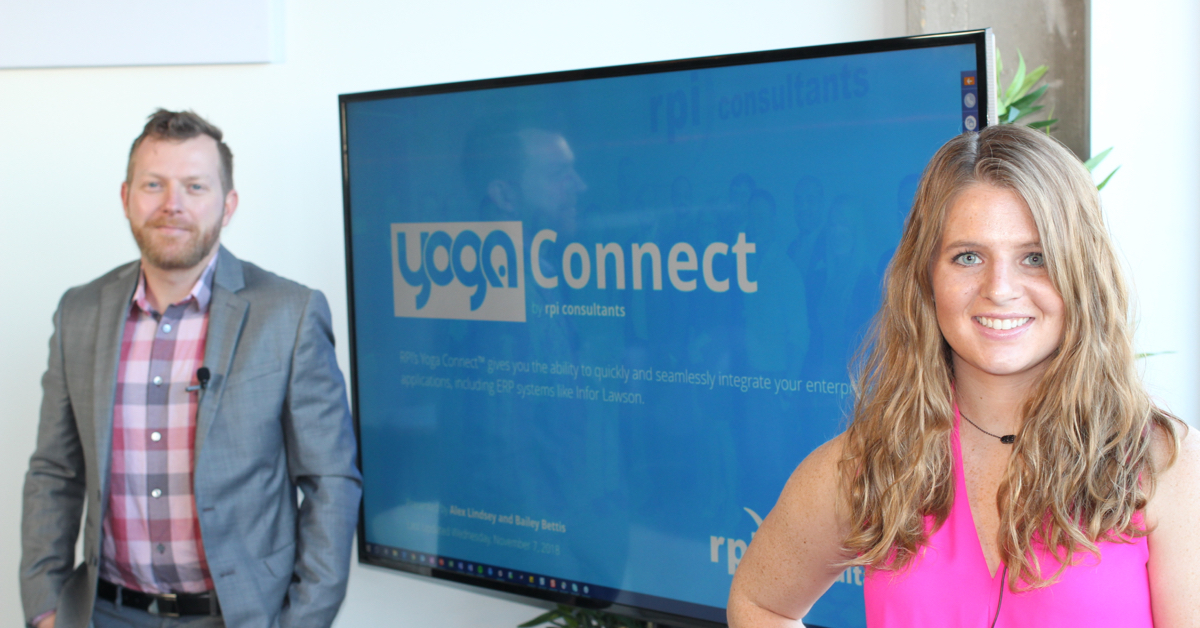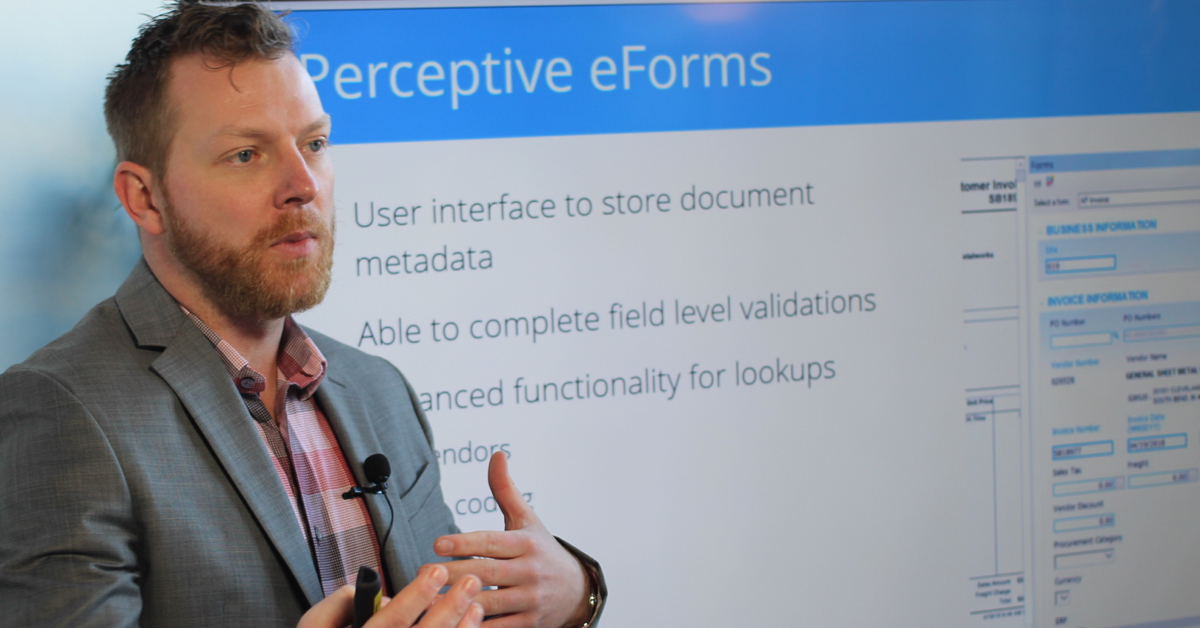Speaker 1:
Welcome to the Tech Pro Unicorn Podcast brought to you by RPI Consultants, a podcast about the magic of digital transformation through technology. Each week we’ll cover topics related to ERP, RPA, business transformation, leadership, healthcare, and unicorns.
Michael:
All right. Welcome back to Tech Pro Unicorn Podcast, episode four here in the month of March. We are joined today by RPI partner, Richard Leigh Stout. Mr. Stout, if you could just introduce yourself a little bit to the audience.
Richard Leigh Stout:
Yeah, sure Michael, thanks for having me. This is Richard Leigh Stout. I have been with RPI consultants since about 2004. In 2013, I had the opportunity to join the leadership of the organization, and I currently work along with my practice managers to manage the Infor Professional Services focused on CloudSuite implementation.
Michael:
Awesome. Well, thank you for taking the time out of your schedule, I know that there’s a lot of implementations and such going on and you have a busy day, so I appreciate you taking some time to join the podcast.
Richard Leigh Stout:
Sure thing.
Michael:
We’re obviously talking about Infor CloudSuite. It’s a topic that is getting a lot of attention in the market as people are looking at what to do with their ERP solutions. And I noticed that RPI has really positioned a couple of offerings, but one of them that’s a particular interest is around pre-planning. And so could you talk a little bit about pre-planning, what it is, why it’s important to pre-plan versus just doing implementation? And any other trends that you think might be helpful to folks, things that are happening that you see as helpful to being successful.
Richard Leigh Stout:
Yeah, sure. So pre-planning is different from planning in that pre-planning is some activities that you can do prior to getting an implementation project actually rolling. Pre-planning involves coming up with this scope and structure of an implementation project, a high-level timeline. Really figuring out what you want to achieve, what are your objectives with an implementation project, and then starting to get a handle on resource requirements in terms of your project team, an implementation partner to work with, technology assets and requirements for the project. Pre-planning, basically, the advantage to conducting a pre-planning exercise is it puts you in a much better position to find an implementation partner that’s a great fit for your organization and for your goals as a project, and then to get a head start on initiating an implementation project so you can overall shorten your timeline, be more efficient.
Michael:
Awesome. Thank you. That sounds useful for anyone really. And I think when I listened to you describe it, I think people kind of maybe go through that on their own in various fashions, maybe as they’re budgeting or going through a budget cycle trying to estimate-[crosstalk 00:00:03:43]
Richard Leigh Stout:
Sure. Yeah. At least any organization that’s had to do an RFP for a CloudSuite implementation, I think they’ve had to do some level of pre-planning just to figure out what goes in the RFP, and collect some information that’s needed, answer questions from different vendors and be able to do an apples-apples comparison looking at various implementation proposals.
Michael:
Awesome. So as you’re helping customers move to CloudSuite and helping them with their planning and such, are you noticing any trends? How is this different than maybe going from a previous version, like version nine to version 10? How is CloudSuite different?
Richard Leigh Stout:
Yeah, I guess, CloudSuite really is a different application than Lawson. It shares a lot of the same DNA. It’s a natural step forward from Lawson, but it’s a different application than Lawson. So previous Lawson upgrades were generally technical focused projects, oftentimes run by IT, and oftentimes a measure of success was minimal disruption or change to the business, for Lawson upgrade. I think, we have quite the opposite with a CloudSuite implementation, either CloudSuite HCM or CloudSuite FSM, or some program that encompasses a full Lawson three Suite to a CloudSuite migration. These projects are a lot more business centric. With CloudSuite, we had the opportunity to rethink a lot of core design decisions that were made back when an organization first implemented Lawson. And many of our customers look a lot different now than they did 10, 15 or 20 years ago, organizationally. So now’s a great time for them to start with a fresh new design.
Michael:
Awesome. Yeah. I think in a previous podcast, Keith had said that the average life in the RP customers seemed to have their ERP for about 20 years. And a lot of red, a lot of change to the organization, as you just spoke to warrants, then changes to things like hierarchy and GL org structure and such.
Richard Leigh Stout:
Yeah, for sure. I mean, especially with our healthcare customer base, I mean, the healthcare market has changed pretty dramatically since the late night.
Michael:
Right. So as they move to CloudSuite and they take advantage and redo their business processes and their organizational structure and such, are there other benefits that they’re getting as they move to CloudSuite?
Richard Leigh Stout:
There are a lot of benefits to moving to CloudSuite. Where can I begin? As a more modern platform, CloudSuite provides a level of visibility into organizational data that legacy Coldwell based solutions just can’t provide. There’s also a great deal of flexibility in terms of their relationships between structural data both on the HR side, as well as, the financial side. So it’s so much easier to model a business within CloudSuite with less compromise, compromise dictated by limitations and that we had in legacy software.
Michael:
Awesome. That sounds exciting. They’re always challenging. And it’s always good to hear that there’s light and benefits at the end of the tunnel for all the effort that folks go through. Why would you say now’s the time to start at least planning for, if not start actually implementing CloudSuite.
Richard Leigh Stout:
For customers that are running Lawson today, if you’ve been in forum or user groups, or if you’ve been keeping a pulse on the loss in space, I think you can see that now it’s pretty much the middle of the migration wave. So this is a great time to, if not, if you haven’t started a CloudSuite project, yet, this is a great time to start planning for a cloud. So, you can move while you can take advantage of everything going on in the market, in terms of Infor participating in a lot of projects. The maturity of the software application as larger entities have already completed migrations and the resources available out there right now that are focused on loss into the CloudSuite migrations. Certainly, there’s a limited talent pool out there of experienced consultants. And now’s the time to start locking in your project team for what could be one to three year program.
Michael:
Awesome. I was excited to hear you say when one of your items, I’m going to key on it. You said, “This is the middle of the integration wave.” So I just want to talk a little bit about that because I know initially, customers having come from the customer community, nobody wants to be first, right? Nobody wants to be on that bleeding edge. So it’s good to hear that some customers have already done it and gone live. I know we’re in the middle of several large, very large healthcare implementations and some public sector. So you would say that it’s pretty safe to get into the pool at this point? The water has been tested.
Richard Leigh Stout:
Yeah, totally. You know that the path to get here has been a little bit different between the HCM and the finance and procurement sides, but the HCM application has been around for quite a long time. Now it’s been successfully used on Prem for eight or 10 years, but what I’m talking about system maturity and attaining that critical mass, I’m talking about multi-tenant, and that’s really where the future is for these applications. And I think we’ve seen enough, large and varied clients successfully move into enforce multi-tenant solution, both on the HCM and the FSM sides at this point.
Richard Leigh Stout:
At least I have a pretty good confidence in the platform and the capabilities of the software. It is also still being actively developed and we’re seeing a lot of advances come up in the software as Infor takes advantage of that more and more experience with different customer requirements, but, as well as, emerging new technologies and capabilities in the space, for example, their acquisition of Birst, and then being able to much improve on the analytics that come with CloudSuite by taking advantage of the first tool.
Michael:
Awesome. So you use the term I just want to clarify in case folks listening, don’t understand, can you just focus on that multi-tenant for a second, now that’s a lot of our customers are coming from an On-prem environment. So how is multi-tenant different than On-prem?
Richard Leigh Stout:
So On-premise software is the traditional legacy model, and that’s where a client hosts systems in their own data centers. Of course, there’s alternative approaches there such as which is hosting, and that’s been quite popular in the Lawson space for a number of years, but when I talk about multi-tenant, it’s really a very different way that applications are delivered. And I think one of the biggest impacts in that change is the update strategy. So moving forward I believe that multi-tenant delivery is going to be the primary way that business applications are made available to clients. And I say that across the spectrum, not just in the enforce space.
Richard Leigh Stout:
Multi-tenant means that the software vendor hosts one instance of an application and that many different customers can use that same instance. And in that mode, the software vendor being that they have one consistent platform that they have control over is able to update the system much more rapidly than in a legacy model where a software vendor needs to account for hundreds of different, various deployment scenarios. So with multi-tenant applications, what we see is a switch in the update paradigm from major upgrades that might happen once a year, once every couple of years, that require a serious round of testing and often come with regressions to a more rapid update model where smaller updates and enhancements are made on a much more rapid schedule, and those updates are available immediately to all customers on the platform without having to undertake specific update work.
Michael:
Awesome. I appreciate that. I think we throw that around multi-tenant and sometimes folks might not really understand what that means. And I think that you just gave me a great and very detailed explanation of that for folks. So, thanks. What would you say some folks, if they said, “Okay, Richard, we’re going to go ahead and we’re going to do this pre-planning thing, but it’s a year out, we got to get budget.” They’re all in, but what are some things that they could do right now internally to get ready?
Richard Leigh Stout:
Sure. So oftentimes a pre-planning engagement is led by an IT group, maybe IT project management office. And I’d say to some of the homework that you could do to prepare for such an engagement would be to start looping in your business leaders and start getting them on board and exposed and engaged for a potential CloudSuite implementation. And start documenting all the various connections to and from Lawson interface as well, their systems, as well as, what we call rice components, which are all of the things that an organization acquires over time that are accustomed to that organization, customer reports, interfaces, or integrations to bolt-on or extension systems, and then any customization to the application itself. So start inventorying all of that stuff and determine which items are still actively used. And for those items that are actively used, document what is the business case? What is the business problem that that item solves?
Richard Leigh Stout:
By having all that information gathered in one place, it’ll save a lot of time when you go into pre-planning. So you can start scoping out, which of those kinds of custom objects need to be recreated, once the organization starts moving to CloudSuite. CloudSuite is a very different technology platform. So any technology elements that an organization maintains on their own and their on-premise environment those need to either be retired. The business challenge needs to be solved using another means, hopefully with native application functionality, or they need to get redeveloped and to work with the newer technologies.
Michael:
Awesome. Sounds like lots of homework for folks that they can get going on without, without help. And just kind of housekeeping getting some information together.
Richard Leigh Stout:
Sure. And it takes buy in from the entire organization for a successful cost of the project. So getting all of your business leaders aligned and behind this project, and just demonstrating support at an executive level, I think is a big step, and it’s never too early to do that.
Michael:
Awesome. And then these are obviously large, right? You referenced the full suite. So obviously we’re touching finance and supply chain and HR. What’s the best way to approach those just in your opinion, the big bang theory still on TV, are we still big banging?
Richard Leigh Stout:
Maybe for a smaller organization, a big bang might be okay. Organizations with say, less than 500 employees, but for our medium and larger sized clients, we would definitely shy away from a big bang implementation. I would say, within Infor’s HCM and talent management suite applications, they were designed to have a migration approach where they can be done separately from finance and supply. And we think it’s wise to take advantage of that approach and decouple all the dependencies across both sides of that project. Also, it is quite a large amount of work to undertake such a project. And it will put a strain on an organization’s internal resources, particularly, an IT department that’s supporting all those business functions. It would be certainly easier for an IT group to break down that project in the smaller size chunks.
Michael:
Awesome.
Richard Leigh Stout:
Now sometimes there can be advantages to running the design phase of both projects concurrently, especially if there’s a large amount of transformation that’s desired. But in that case, we’d still typically recommend a decoupled go live.
Michael:
Okay. I appreciate the perspective there. We talked a little bit as we have just been having the conversation. We talked a little bit about durations. I think you mentioned one to three years, but you mentioned resources in the last question. I know every customer is different, but if we were to look at a full suite implementation, right. As folks who are trying to get their heads around, what does that look like? Can you talk just a little bit to what you’ve seen as far as durations and types and numbers of resources that are needed for this? Is this kind of a small, just kind of run this along with 10 other projects kind of project, or is this really needing to be the organizational focus?
Richard Leigh Stout:
Yeah. Depending on organization’s goals and objectives for our cost of implementation, it can be on the scale of for our healthcare customers at an Epic or Cerner type implementation, where for the duration of the project, it is the organizations primary focus from at least around change and project management point of view. If let’s take the example of a healthcare client with say, 10,000 employees and multiple facilities, maybe they’re running Lawson on all three suites on premise, they might break down a class B implementation into three major areas that would be CloudSuite HCM, CloudSuite FSM, and then finally payroll. And those three initiatives really would only cover functionality that’s currently in Lawson today. We might talk about a fourth phase, which would be adding in some of the additional talent management capabilities on the HCM side, such as talent acquisition.
Michael:
Okay. Well, awesome. I know you have a quite the busy day and I do appreciate you taking the time to participate in our podcast and give your perspective and insight as somebody who’s been in the industry for quite a while. So thanks for again, for taking the time. If you’re interested in Mr. Stout and would like to learn more about the service and offerings for RPI best place to get that is probably www.rpic.com to start there. And if you’re interested in the crazy world of a unicorn that is @wwwdottechprounicorn.com. So thank you Mr. Stout again for making the time and we wish you well, and your continued success in the ERP space.
Richard Leigh Stout:
Great. It’s been my pleasure. Thanks for having me, Michael.
Michael:
Awesome. Thank you.
Speaker 1:
Thanks for joining us this week on the tech pro unicorn podcast, make sure to visit our website @wwwdottechprounicorn.com, where you can subscribe to the show and catch our latest blog articles. While you’re at it, if you found value in this show, we’d appreciate a rating on iTunes. Be sure to tune in next week for our next episode. Remember unicorns represent the magic of digital transformation that occurs when business process is enabled with technology.












